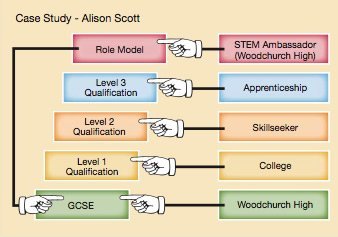
ScottishPower currently supplies electricity and gas to over five million homes and businesses in the UK and operates an extensive electricity transmission and distribution network.
ScottishPower is at the forefront of innovation. It is involved in major engineering projects from wind farms and hydro-electric power to tidal turbines and gas power stations. ScottishPower is committed to creating value for investors, customers, employees and society in general.
As part of the Iberdrola Group, it is one of the five largest energy companies in the world with a presence in over 40 countries and is leading the way in renewable energy generation and investment. Turnover for the year ending December 2009 was £6.734 billion. It currently employs over 8,500 employees in the UK and 33,000 across the Iberdrola group. The company offers a wide range of career opportunities in areas such as engineering, trading, HR, marketing, customer service, IT and sales.
ScottishPower understands the value of its people in achieving its vision: ‘To be the UK”s best-integrated energy supplier and a world leader in renewables. This vision is channelled into meeting a number of business objectives:
- To invest and renew assets
- To grow through investment
- To use cash well
- To improve profit margins
- To operate responsibly showing responsibility to the environment, employees and society
- To respond to new opportunities.
This case study shows how a dynamic and growing company needs to recruit new people with new skills to meet the energy challenges of the 21st century.
Workforce planning
Workforce planning helps an organisation to estimate its future workforce requirements and calculate the numbers, nature and sources of potential employees who might meet that demand.
Effective workforce planning helps companies identify and plan how to tackle their current and future workforce challenges and priorities. It provides a sound basis for developing an effective workforce strategy.
An easy way of thinking about workforce planning is to ‘get the right number of people, with the right skills, in the right place, at the right time’.

For ScottishPower, the right people will be those with relevant skills and capabilities to drive the company forward this year, next year and future years. ScottishPower then provides training and development opportunities that enable people to enhance their skill sets and build their careers. This gives the company the continued benefit of experienced, committed and well-trained employees.
Replacing skills
Like other established companies, ScottishPower may have a large number of long-standing employees with vast skills and experience. However, as people retire, it needs to replace those skills. Careful monitoring is essential to examine the age and skills profile of the workforce when compared with present and future company needs. This ensures the business can meet its objectives.

Every employee has a role to play in helping the business to achieve its aims and objectives. To achieve its vision, ScottishPower has put in place various Human Resources strategies. The company states: ‘Our business is energy. But ScottishPower is all about people.’
Reasons for workforce planning
Demand for new recruits might be driven by forecast increases in demand for energy or the introduction of new legislation. ScottishPower needs to ensure it has engineers with the skills to deliver its current services to customers. It also needs to have people with the knowledge and skills to work with new technology or in ‘green’ energy developments. These will provide the services of the future.
Factors affecting the workforce

As well as retirements and resignations, other internal factors impact on the workforce plan. For instance, the company is currently working on Carbon Capture and Storage (CCS) solutions. This is a new technology that will enable CO2 from power stations to be trapped, turned into a liquid and stored safely in porous rocks under the sea bed. This project requires workers skilled in research, design and testing of this technology.
ScottishPower is also currently facing a number of challenges in its external environment. These affect the availability of the labour force and include:
- Political factors. There is not enough take-up of STEM subjects (Science, Technology, Engineering and Maths) at school to support the industry in the future. Between 2010 and 2024 the UK power sector will need around 34,000 new people. Government measures to improve the up-take of STEM subjects at schools and universities will help to address this problem and ensure that ScottishPower and other utility companies will have enough future recruits.
- Economic factors. Between 2008 and 2010, the UK economy was in recession. This led to a reduction in demand for all products, including energy. Although slow growth in the economy might limit the workforce, the firm still needs to be prepared for economic recovery.
- Social changes. There is an ageing workforce and a UK-wide technical skills shortage. This means that ScottishPower needs to compete with other energy and utility companies to attract and retain the best talent.
Resourcing strategies and tactics

To respond to these challenges ScottishPower’s Resourcing Approach involves four stages:
1. Human Resource planning
- Creating short, medium and long-term business planning
- Workforce programmes such as Modern Apprenticeships, Graduate and other Vocational programmes
- Skills profiling – understanding the skills required to do certain roles now and in the future
- Succession planning – setting out plans to replace employees who are promoted or retire.
2. Attraction – to acquire the best possible people
- Raising awareness of the ScottishPower brand
- Proactively engaging with candidates for jobs
- Using appropriate and diverse channels (e.g. newspapers, internet) for attracting new recruits
- Offering competitive pay and other benefits to retain existing staff (e.g. flexible working, pensions, training and development opportunities).
3. Selection to choose the right people
- Setting out clearly the range of skills and experience required for new job holders
- Using fair and accurate selection methods. These include application forms, interviews, ability tests and presentations.
4. Recruitment
- Recruiting the best staff and managers through well organized recruitment literature and recruitment methods
- All vacancies are posted on ScottishPower’s careers website and candidates can apply online at www.scottishpower.com/jobs.
This approach enables the company to develop and maintain its technical skills and other capabilities at the highest level. It also helps to ensure the best possible service for customers. It supports growth and development within the company to ensure leaders of the future.
Attracting people
Attracting employees involves:
- influencing new people to take an interest in and apply for jobs with a company
- encouraging existing employees to build their careers with a company. ScottishPower attracts workers in a number of ways such as through the company careers website, using recruitment agencies, online job sites, local and national media and university and school career services. In particular, it looks to improve information about opportunities for students.
A key challenge is to show that an engineering career is an exciting prospect for a young person.
ScottishPower”s publicity materials focus on the range of modern industry opportunities provided. It shows how its work involves exciting new technologies in leading-edge renewable energy generation, emphasising various opportunities to earn and learn.
Training programmes
ScottishPower actively engages with potential and actual employees by delivering vocational and training programmes. It has well-established post-16 career pathways in the form of:
- Apprenticeships
- Adult up-skilling initiatives
- Engineering foundation programmes
- Graduate development schemes.
Partnerships
The company has also developed a range of partnerships with schools and other stakeholders involved with the pre- and post-16 age groups. These aim to promote the sector and the ScottishPower brand by means of a diverse range of unique and innovative programmes.
These allow ScottishPower to increase its regional talent pools and develop new recruitment streams for apprenticeships and graduate programmes.
Developing people
Training enables workers to acquire, refresh and enhance the skills needed to contribute to a company’s objectives.
Development of people takes a different approach. It is concerned with the needs of individuals and their motivation in the workplace. Personal development supports personal growth. It enables employees to progress on to higher level roles.
Development may arise from specific training and from gaining responsibility, e.g. through secondment. It may also arise from encouragement from a mentor or through coaching from a more experienced employee.
Employee Case Study

Alison is currently employed at ScottishPower as an Apprentice. She is due to complete her apprenticeship and will become an Electrical Jointer. During school Alison had a real desire to ‘work with her hands’ and was encouraged to study engineering qualifications at college.
Alison says “ After I finished school and gained my GCSEs, I went to a local college to study engineering and after completing my year”s study I was successful in gaining a place on the ScottishPower Engineering Foundation Programme. I gained loads more qualifications and completed additional training. I was then successful in gaining a place on the Apprenticeship Programme which I am about to complete.
‘The main reason for choosing ScottishPower is that it is recognised as a great employer which has designed a number of training programmes allowing me the opportunity to develop new skills. They also provide development opportunities and recently I have become a STEM Ambassador for ScottishPower and I am now going back to my old school encouraging students to consider a career in our sector.”
Alison’s development programme at ScottishPower shows how she has been able to progress personally and professionally. By giving her new skills and experience, Alison has become a more productive and better trained employee for ScottishPower.
ScottishPower is pleased to support her development because it knows that she will be not only more skilled in her job, but also more motivated and committed to the business. In addition, ScottishPower has gained a role model for young people to aspire to.
Workforce planning is all about getting the right number of people with the right skills, in the right place, at the right time. ScottishPower uses workforce planning to respond to the challenges of providing Britain with reliable and clean energy to meet domestic and business needs.
Workforce planning is not just about recruiting new people to replace those leaving the industry. It is also about helping individuals to build their careers. Workforce planning ensures that workers make a more effective contribution to the company.

People like Alison Scott who are keen and willing to take up a range of development opportunities are the sorts of employees that ScottishPower is looking for. Through these opportunities Alison has been able to build her own career with ScottishPower. She now helps to communicate that positive approach to young people through her role as a STEM Ambassador.
ScottishPower needs to recruit and retain dedicated employees. It wants people who enjoy their work and want to contribute to the changing industry. There are many exciting job opportunities within ScottishPower. It needs employees with a ‘can do’ attitude and a willingness to learn to fill these roles. This will enable it to grow from within for years to come.



